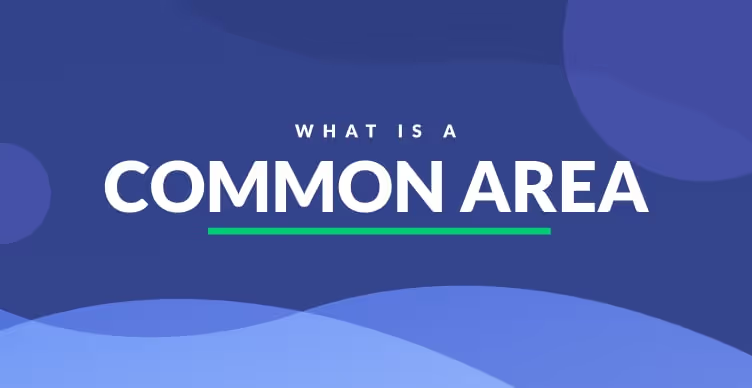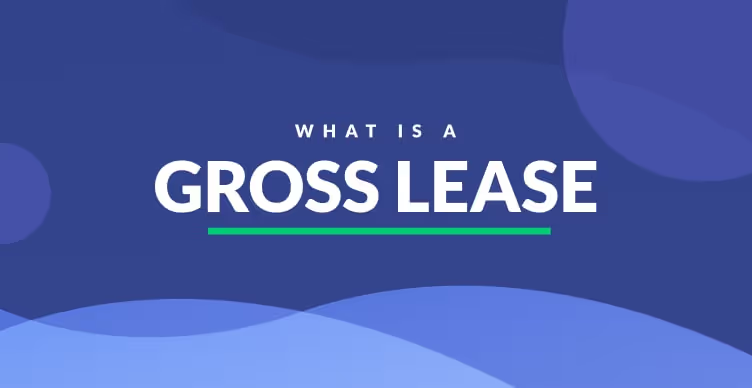If you are a landlord that manages any property with a common area, you are going to want to learn all about common area maintenance (CAM). In this article, we are going to be explaining everything there is to know about common area maintenance, including the operating expenses, the maintenance costs, and much more.
To begin, let's give a brief overview of what common area maintenance entails.
What Is Common Area Maintenance?
Many multi-family rental properties, like duplexes or triplexes, have areas called common areas. These areas are sections of the properties that multiple residents can use at the same time.
Some examples of common areas include:
- The parking lot
- Office space
- Laundry rooms
- Elevators
- Hallways
...and much more.
These areas typically require maintenance. As such, the landlord is responsible for the common area maintenance and the tenant pays CAM fees in order to cover the common area maintenance costs for each month.
What Is Included In The Common Area Maintenance?
Different landlord will have different specifications pertaining to what counts as a common area and to what extent it will be maintained. Usually, this information is detailed in the lease agreement, along with other expenses like property taxes.
In most residential and commercial leases, the tenant should be provided with:
- A list of all the common areas
- A statement from the property manager that those areas will be regularly maintained
- The rules that must be followed in the common areas
- How much the tenant will be paying in CAM charges
Including these in the lease agreement is the bare minimum as the lease agreement should go into as much detail as possible to make sure that there are no misunderstandings. However, since lease agreements tend to contain potentially confusing terms, it is always a good idea to have a real estate attorney take a look at it before you sign it.
So, now that we know all about what common area maintenance is and what it includes, let's discuss the costs of the maintenance to the property owner and the tenants.
Common Area Maintenance Costs
The costs of common area maintenance depend greatly on a variety of different factors. These factors include:
- The number of tenants on the property
- The size of the property
- Amount of common areas
- The types of common areas
...and much more.
There are also a variety of ways that a landlord can charge the tenants for common area maintenance. Before going into the different ways that a tenant pays for these expenses, let's discuss the different ways that the common area maintenance fees are typically calculated.
How Are CAM Fees Calculated
CAM fees are typically calculated by using the average operating expenses from previous years. These operating costs are calclulated by summing up the total maintenance costs for all of the common areas, including instances that were not routine, like complete repairs or replacements.
After calculating the total annual costs of the common area maintenance, that cost is then distributed to the payments based on the rentable square footage of each tenant's unit. For a commercial property, this may mean the square footage of each tenant's office space, break rooms, and other spaces occupied by that tenant.
Here is an example of how a tenant's proportionate share of the common area maintenance costs could be calculated.

CAM Fees Reconciliation
Many times, landlords over-estimate the costs of the annual common area maintenance and end up charging their tenants more than the actual costs.
In these cases, landlords will reconcile the charges by comparing the costs of the maintenance for the year to what the tenants had paid. If the tenants ended up paying more than the actual cost, they would be issued a credit, either in the way of a refund or just having it deducted form their rent.
This is often the case with landlords who prefer preventative maintenance. This is when landlords continuously maintain the common areas even when there is not an urgent problem.
How Do Tenants Pay CAM Fees
There are a few different ways that tenants can pay for the CAM fees. These are typically either in the form of a full service lease or a triple net lease, both of which will be discussed below.
Full-Service Leases
A full-service lease agreement, or a gross lease, is an agreement where the tenant pays a bse rent which includes all, or most, capital expenditures, including property taxes, CAM charges, general building maintenance, security costs.
Property managers typically adjust this amount based on several different factors, including:
- Current market rent
- Total operating expenses
- Number of tenants
...and a few more. However, the number that will be adjusted most often are the CAM expenses. Since this number is calculated based on the CAM costs from the previous years (or months), it can fluctuate quite a bit and cause the landlord to continuously adjust it.
Triple Net Lease
A triple net lease is essentially the opposite of a full service lease. In triple net leases, the tenant pays the landlord a lower initial base rent but is also responsible for paying for all additional charges.
These charges can consist of:
- Utilities
- Cleaning
- HVAC
- Elevator
- CAM Fees
- Plumbing
These charges depend greatly on the individual rental properties and landlords. There are various pros and cons to using triple net leases, all of which are discussed in DoorLoop's complete guide to triple net leases.
CAM Caps & Floors
Many lease agreements will include information on CAM caps and floors. These are terms used to describe the minimum and the maximum that a tenant can be charged in CAM fees.
These are usually set using a percentage of the current CAM charges. For example, the cap of the common area maintenance fees may be 5% of the previous years charges.
This helps the tenant feel secure that the money they are paying is actually going to what it is supposed to - common area maintenance.
Tips For Property Managers
Below, we will be going over some useful tips for property managers when it comes to common area maintenance.
Use Preventative Maintenance
One of the best tips for property managers when it comes to maintenance in general is to conduct preventative maintenance. As mentioned before, preventative maintenance is when maintenance is conducted without it necessarily being needed.
For instance, a parking lot can develop cracks after some time. These cracks can start off as a minimal problem that may not even catch the eye of the property manager. However, after some time, these cracks can develop into larger cracks or potholes that can seriously damage someone's car. At this point, the maintenance becomes much more expensive - and it could have been avoided by using preventative maintenance.
Conducting Regular Inspections
One of the best ways to stay on top of preventative inspections is by conducting regular inspections.
It is important that these inspections are outlined in the lease agreement and that both the landlord and the tenant is prepared for them. To best prepare for rental property inspections, it is recommended that a rental property checklist be created.
This helps the landlord and the tenant keep track of everything that has passed the inspection or may need maintenance.
Overestimate The Charges
Although this may not be the best idea for some property managers, it could actually be beneficial to the tenants to overestimate how much maintenance will be for the year. This is because, if the number ends up being too high, the tenants will get a credit or a refund for that amount.
On the other hand, if the charges are calculated based on the exact amounts from previous years, the tenants may have unexpected charges that they may not be ready for.
This is mostly useful for full service leases since tenants with triple net leases are responsible for the costs anyway.
Controlling Maintenance Costs
Lastly, it is important for property managers to be able to control their maintenance costs. This is especially true if the lease agreement outlines a maintenance cap.
As mentioned before, one of the best ways to do this is by exercising preventative maintenance and conducting regular property inspections. By combining both of these, it becomes much easier to lower the costs of annual maintenance and be able to give your tenants peace of mind.
Also, having a go-to maintenance team can also help reduce costs as some maintenance teams may offer lower prices for repeat clients.
Bottom Line
The bottom line is that common area maintenance is something that landlords shouldn't have to struggle with. When handled correctly, conducting this maintenance can be very easy, and may not be as expensive to the tenants as it could be.
Just remember to follow the advice outlined here to keep the common area in better shape and keep the costs of maintenance as low as possible. And, most importantly, these tips can help strengthen the relationship between tenants and property managers for a much smoother renting experience.
Frequently Asked Quesitons
What is Common Area Maintenance?
Common area maintenance (CAM) is the cost your business pays for the areas in a commercial building that are common to all tenants.






.svg)
.svg)

